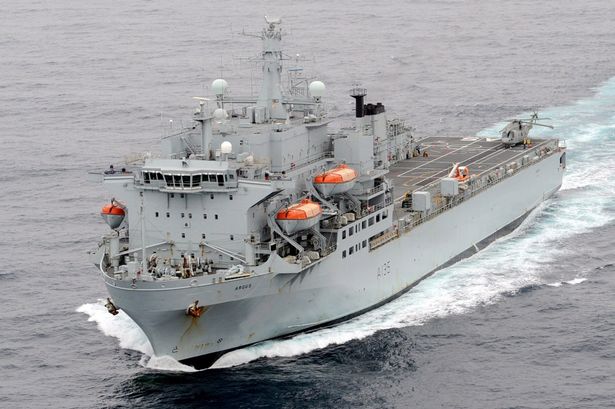This is the third in a series of posts that considers prioritisation within UK Defence. The first post examined Defence’s approach to prioritisation in general; the second focused on priorities in past defence reviews and SDSRs. Future posts will investigate what a simple set of prioritised defence missions in the Integrated Review might mean for capabilities within the five operating domains of maritime, land, air, cyber and space.
The previous posts in this series have recognised that, although past defence reviews and SDSRs have often included high-level priorities for defence, they seldom prioritised within them. The only exception to this was the Nott Review in 1981; however, his attempt to abandon the traditional division of the defence budget between the services and adopt a prioritised functional approach was widely opposed and ultimately did not survive. In general, Nott’s approach was unsuccessful because it sought to remove the ambiguity that governments favour to maximise their decision-making freedom of manoeuvre, and it did not guarantee the financial parity that the single services desire in the division of the defence budget.
In reality, if prioritisation of defence missions is disliked by both politicians and the military, it is unlikely to be a feature in future reviews. That said, a simple set of prioritised requirements would be a powerful way to manage the procurement and maintenance of military capability, now and in the future. This post explores how that might work.
Prioritised Defence Missions
Recognising the analysis from a recent RUSI Whitehall Report – Defence and the Integrated Review: A Testing Time, authored by Malcolm Chalmers, Deputy Director General at the Royal United Services Institute (RUSI), and Will Jessett, a visiting professor at King’s College London, any prioritisation of defence missions today would take place against a backdrop of strategic uncertainty that has not been matched since the immediate post-Cold War defence review in 1990. Moreover, the consequences of the COVID-19 pandemic are only likely to heighten geopolitical tensions. Acknowledging this, a more cautious, national interest driven standpoint, along the lines of Theresa May’s speech to the US republican Party in Philadelphia in 2017, rather than the interventionist approach espoused by Tony Blair in his speech to the Chicago Economic Club in 1999, may well provide the foreign policy building blocks for the Integrated Review. If that is indeed the case, an example of a simple, prioritised list of defence missions could be:
1. Defence and resilience of the UK homeland and its overseas territories (including maintenance of the independent nuclear deterrent).
2. UK contribution to NATO collective defence.
3. Power projection in support of UK interests worldwide.
Defence Planning Assumptions
This prioritised list would need amplification through a set of planning assumptions to provide a baseline for programming and force development purposes. These would need to give direction on scale of forces to be maintained against each priority, as well as readiness, frequency, concurrency, duration and recuperation for operations. An example of assumptions to support the prioritised list of defence missions outlined above could be:
– The UK will contribute six major warships, one armoured brigade, and two fast-jet squadrons to the NATO Readiness Initiative. All force elements will be deployable within thirty days and sustainable for one hundred and eighty days.
– The UK will maintain a war-fighting division optimised for high intensity combat operations within northwest Europe. All force elements will be deployable within ninety days and sustainable for one hundred and eighty days.
– The UK will maintain at readiness one carrier strike group, one light brigade, one expeditionary air wing, and supporting joint enablers for intervention operations outside the NATO area. Lead force elements will be deployable within ten days and all force elements will be sustainable for one hundred and eighty days.
– When the force elements identified above are not deployed at this scale, they will be able to undertake a number of smaller operations simultaneously. These might include: specialist missions such as counter-terrorism or counter piracy; non-combatant evacuation operations; humanitarian operations; or defence engagement activities, such as training teams and mentoring.
Ranking of Capabilities
Finally, in today’s current resource-constrained environment, it must be recognised that the defence budget cannot fund all of the capabilities the single services consider necessary to support all of the prioritised defence missions in the example above. This immediately creates a dilemma – should all of the capability needed to fulfil the highest priority be procured before considering the next priority, and so on? Clearly, the existing force structure and multiple-use capabilities must be taken into account, and it would be extremely short-sighted not to maintain at least some capability against the second and third priority defence missions. Therefore, a mechanism is needed to rank capability within the defence missions. A simple method would be for a MOD military judgement panel to allocate capability into one of three categories:
– Essential. One or more defence missions cannot be successfully undertaken without this capability.
– Highly Desirable. This capability makes a significant contribution to the successful undertaking of one or more defence missions.
– Desirable. This capability contributes to the successful undertaking of one or more defence missions.
Conclusion
Even though the prioritisation of defence missions within the forthcoming Integrated Review would be unpopular, it is needed to provide a meaningful framework within which limited resources can be allocated to the provision and maintenance of military capability. Any prioritisation should be as simple as possible; however, it must be underpinned by credible and achievable planning assumptions, as well as a process to rank military capability both within and across the prioritised defence missions.






